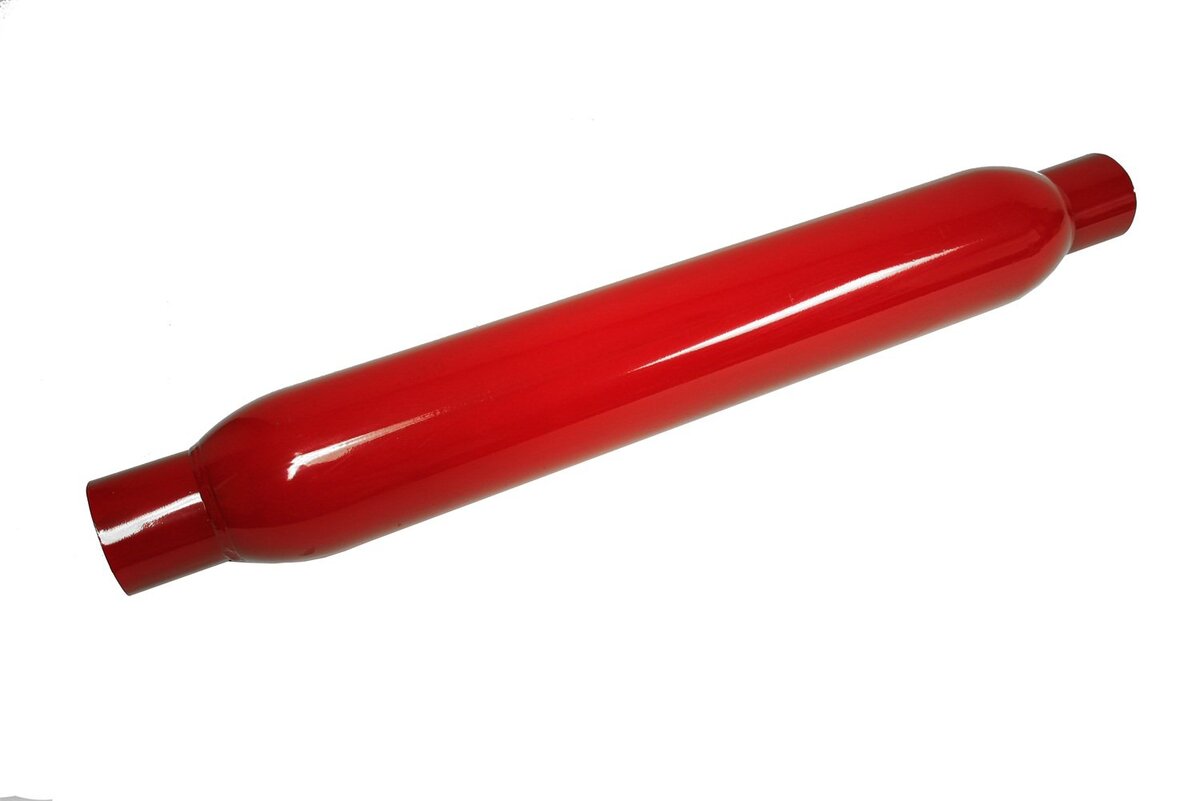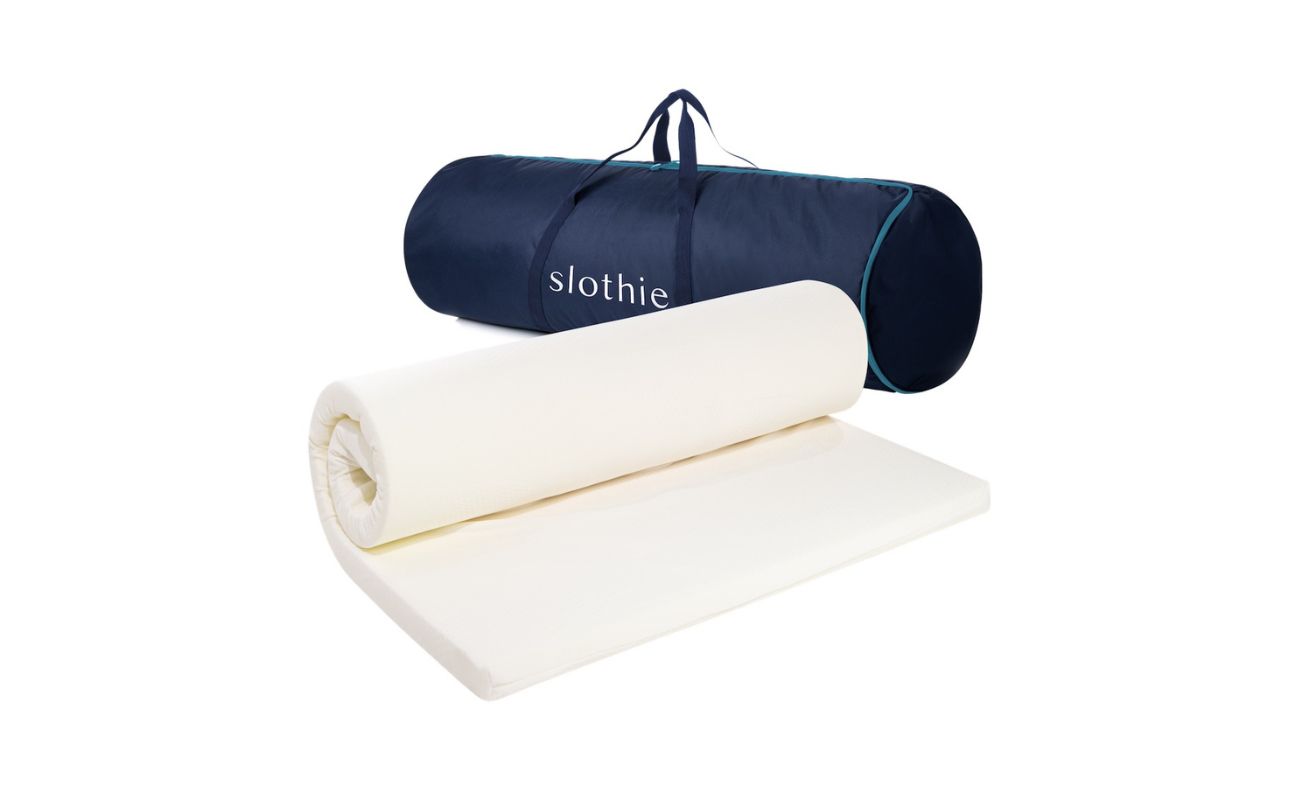Home>Furniture & Design>Interior Design Trends>What Are Glass Packs


Interior Design Trends
What Are Glass Packs
Modified: February 18, 2024
Discover the latest interior design trends with our guide to glass packs. Explore innovative ideas and inspiration for your home decor.
(Many of the links in this article redirect to a specific reviewed product. Your purchase of these products through affiliate links helps to generate commission for Storables.com, at no extra cost. Learn more)
Introduction
Glass packs, also known as glasspack mufflers, are a popular component in the world of automotive exhaust systems. These unique mufflers have a distinct appearance and are renowned for their distinctive sound. They have been a staple in the automotive industry for decades, and their enduring popularity continues to make them a sought-after choice for car enthusiasts and performance seekers alike.
Glass packs are not your typical mufflers; they stand out due to their compact size and simple design. Unlike traditional mufflers, which are encased in a metal shell, glass packs feature a straight-through design with a perforated core wrapped in sound-absorbing material and enclosed in a glass or steel pack. This construction allows for a more direct exhaust flow, resulting in a distinct exhaust note that sets glass packs apart from other muffler types.
As we delve deeper into the world of glass packs, we will explore their definition, delve into their intriguing history, uncover their benefits and drawbacks, and shed light on their common uses. Whether you are a seasoned automotive enthusiast or simply curious about the inner workings of exhaust systems, this exploration of glass packs will provide valuable insights into this iconic automotive component.
Key Takeaways:
- Glass packs are unique mufflers with a see-through or metallic outer casing, known for their aggressive and distinctive exhaust sound, making them a popular choice for car enthusiasts seeking a bold auditory experience.
- While glass packs offer a deep and aggressive exhaust note, they may also lead to increased interior noise levels and regulatory compliance considerations, making them a choice to carefully consider for vehicle customization.
Read more: What Is A Glass Pack
Definition of Glass Packs
Glass packs, also known as glasspack mufflers or cherry bomb mufflers, are a type of automotive muffler characterized by their compact size and distinctive design. Unlike traditional mufflers, which are encased in a metal shell, glass packs feature a straight-through design with a perforated core wrapped in sound-absorbing material and enclosed in a glass or steel pack. This unique construction allows for a more direct exhaust flow, resulting in a distinct exhaust note that sets glass packs apart from other muffler types.
The term "glass pack" originates from the visible glass or steel pack that encases the internal components of the muffler. This transparent or metallic outer layer provides a glimpse into the inner workings of the muffler, giving it a visually distinctive appearance. The glass pack's compact size and simple design make it a popular choice among automotive enthusiasts seeking to enhance the performance and sound of their vehicles.
Glass packs are renowned for their signature sound, often described as aggressive, deep, and throaty. This distinct exhaust note is achieved through the straight-through design, which allows for less restriction in the exhaust flow compared to traditional chambered mufflers. As a result, glass packs produce a louder and more pronounced exhaust tone, making them a preferred option for those seeking a more assertive auditory experience from their vehicles.
In addition to their unique sound, glass packs are favored for their affordability and ease of installation. Their compact size and straightforward design make them a practical choice for a wide range of vehicles, from muscle cars to hot rods and off-road vehicles. Furthermore, the transparent or metallic outer casing adds a visual appeal to the exhaust system, making glass packs a popular choice for automotive enthusiasts looking to customize the appearance of their vehicles.
Overall, the definition of glass packs encompasses their compact size, distinctive design, and signature exhaust note, making them a standout component in the realm of automotive exhaust systems. Whether for performance enhancement or aesthetic customization, glass packs continue to captivate automotive enthusiasts with their unique characteristics and enduring appeal.
History of Glass Packs
The history of glass packs traces back to the mid-20th century, a time when automotive enthusiasts and hot rod builders sought innovative ways to enhance the performance and sound of their vehicles. The concept of glass packs emerged as a result of this pursuit, leading to the development of a muffler design that would revolutionize the automotive aftermarket industry.
In the 1950s, the automotive landscape experienced a surge in custom car culture, with enthusiasts seeking to modify and personalize their vehicles to reflect their individuality and performance preferences. It was during this era that glass packs, also known as cherry bomb mufflers, gained prominence as a popular choice for those looking to amplify the exhaust note of their cars.
The origins of glass packs can be attributed to the desire for a more aggressive and distinctive exhaust sound. Traditional mufflers of the time were often restrictive, leading to a subdued and muffled exhaust tone. In response to this, glass packs were engineered with a straight-through design, allowing for a freer flow of exhaust gases and resulting in a louder and more pronounced exhaust note.
The name "cherry bomb" is said to have originated from the explosive sound produced by these early glass pack mufflers, reminiscent of the loud report of a cherry bomb firework. This association with explosive sound further contributed to the allure of glass packs among automotive enthusiasts, cementing their status as a symbol of performance and audacious style.
As the popularity of hot rodding and custom car culture continued to grow, so did the demand for glass packs. Their distinctive appearance, compact size, and aggressive sound made them a preferred choice for those seeking to make a bold statement with their vehicles. The aftermarket industry embraced the trend, offering a wide range of glass pack options to cater to the diverse needs of automotive enthusiasts.
Over the years, glass packs have become synonymous with performance and customization, earning a permanent place in the automotive aftermarket landscape. Their enduring appeal and iconic status in automotive history reflect their significant impact on the evolution of exhaust system design and the culture of automotive customization.
Today, the legacy of glass packs lives on, with modern iterations incorporating advanced materials and engineering techniques while staying true to their original concept. As a testament to their enduring popularity, glass packs continue to be a staple choice for automotive enthusiasts looking to infuse their vehicles with a bold and unmistakable exhaust sound, carrying forward a rich history rooted in innovation and individuality.
Benefits of Glass Packs
Glass packs offer a myriad of benefits that contribute to their enduring popularity among automotive enthusiasts and performance seekers. From their distinctive sound to their practical advantages, glass packs have carved out a unique niche in the realm of automotive exhaust systems.
-
Distinctive Sound: One of the most prominent benefits of glass packs is their signature exhaust note. The straight-through design of glass packs allows for a more direct flow of exhaust gases, resulting in a deep, aggressive, and throaty sound that sets them apart from traditional mufflers. This distinct auditory experience adds a touch of individuality to the vehicle, making it stand out on the road and at car meets.
-
Performance Enhancement: Glass packs are known for their ability to improve the performance of a vehicle. The less restrictive design of glass packs compared to chambered mufflers allows for better exhaust gas flow, which can contribute to a slight increase in horsepower and torque. This performance enhancement is particularly appealing to automotive enthusiasts seeking to optimize the power and responsiveness of their vehicles.
-
Affordability: Another notable benefit of glass packs is their affordability. Compared to other aftermarket exhaust components, glass packs are often more budget-friendly, making them an attractive option for those looking to upgrade their vehicle's exhaust system without breaking the bank. This accessibility has contributed to the widespread appeal of glass packs among a diverse range of automotive enthusiasts.
-
Ease of Installation: Glass packs are relatively easy to install, making them a practical choice for DIY enthusiasts and professional installers alike. Their compact size and straightforward design simplify the installation process, allowing for a hassle-free upgrade to the vehicle's exhaust system. This ease of installation adds to the overall appeal of glass packs as a convenient and effective aftermarket option.
-
Visual Appeal: Beyond their performance and sound benefits, glass packs also offer visual appeal. The transparent or metallic outer casing of glass packs adds a unique aesthetic element to the vehicle's exhaust system, enhancing its overall appearance. This visual enhancement contributes to the customization potential of glass packs, allowing automotive enthusiasts to personalize the look of their vehicles while enjoying the accompanying auditory and performance benefits.
In summary, the benefits of glass packs encompass their distinctive sound, performance enhancement, affordability, ease of installation, and visual appeal. These advantages have solidified glass packs as a favored choice for automotive enthusiasts seeking to elevate the auditory and performance characteristics of their vehicles, while also adding a touch of individuality and style to their automotive endeavors.
Drawbacks of Glass Packs
While glass packs offer a range of benefits, it is important to consider their drawbacks as well. Understanding the potential limitations of glass packs can provide a comprehensive perspective for automotive enthusiasts and consumers evaluating their exhaust system options.
-
Interior Noise Levels: One of the primary drawbacks of glass packs is the potential for increased interior noise levels. The aggressive and pronounced exhaust note produced by glass packs can result in a louder cabin environment, which may not be desirable for all drivers and passengers. Prolonged exposure to high interior noise levels can lead to driver fatigue and reduced comfort during extended journeys.
-
Sound Regulation Compliance: In some regions, there are regulations governing vehicle exhaust noise levels. The distinct sound produced by glass packs may exceed the permissible limits set by local authorities, leading to potential legal implications and the need for additional sound attenuation measures to ensure compliance. This regulatory aspect should be carefully considered by individuals contemplating the installation of glass packs on their vehicles.
-
Exhaust Drone: Glass packs are known to produce an exhaust drone, particularly at certain RPM ranges. This low-frequency resonance inside the vehicle cabin can be perceived as an undesirable sound characteristic by some drivers. The presence of exhaust drone may detract from the overall driving experience, especially during highway cruising or extended periods of consistent engine load.
-
Limited Sound Tuning: While the aggressive exhaust note of glass packs appeals to many automotive enthusiasts, it may not align with the preferences of all drivers. Unlike adjustable exhaust systems or mufflers with variable sound profiles, glass packs offer limited sound tuning options. This lack of adjustability may pose a drawback for individuals seeking a more customizable exhaust sound experience.
-
Durability and Corrosion: The exposed nature of glass packs, particularly those with transparent outer casings, can make them susceptible to environmental elements and road debris. This exposure may lead to accelerated corrosion and deterioration, potentially impacting the longevity and visual appeal of the mufflers. Regular maintenance and protective measures are essential to mitigate the effects of corrosion on glass packs.
In summary, while glass packs offer distinct advantages, including their signature sound and affordability, it is essential to acknowledge their drawbacks. The potential for increased interior noise levels, regulatory compliance considerations, exhaust drone, limited sound tuning options, and susceptibility to corrosion should be carefully weighed when evaluating the suitability of glass packs for a vehicle. By understanding these drawbacks, consumers can make informed decisions regarding their exhaust system preferences and requirements.
Read more: What Are Glass Pack Mufflers
Common Uses of Glass Packs
Glass packs have found widespread application in the automotive world, serving various purposes and meeting the diverse needs of automotive enthusiasts and performance seekers. Their unique characteristics and distinctive sound have positioned them as a popular choice for a range of vehicles and driving scenarios.
Performance Vehicles
Glass packs are commonly utilized in performance vehicles, including muscle cars, hot rods, and sports cars. Their ability to enhance exhaust flow and produce a deep, aggressive exhaust note aligns with the performance-oriented nature of these vehicles. The distinctive sound of glass packs contributes to the overall driving experience, adding a touch of boldness and individuality to high-performance automotive endeavors.
Custom and Classic Cars
In the realm of custom and classic cars, glass packs have become a favored option for enthusiasts seeking to amplify the auditory presence of their vehicles. The retro appeal of glass packs, reminiscent of their prominence in the hot rod and custom car culture of the 1950s, makes them a fitting choice for classic car restorations and custom builds. The visual and auditory impact of glass packs adds a nostalgic and spirited dimension to these automotive projects.
Off-Road and Truck Applications
Off-road vehicles and trucks often benefit from the use of glass packs, particularly in scenarios where a robust exhaust sound is desired. The aggressive tone produced by glass packs aligns with the rugged and adventurous nature of off-road driving, enhancing the overall off-road experience. Additionally, the compact size and straightforward installation of glass packs make them a practical choice for off-road and truck enthusiasts seeking to customize their vehicles' exhaust systems.
Read more: How To Pack Glass
Show and Display Vehicles
Glass packs are frequently incorporated into show and display vehicles, where visual and auditory appeal play a significant role. The transparent or metallic outer casing of glass packs adds a visually striking element to the vehicle's exhaust system, complementing the overall presentation of show cars and display vehicles. The distinct exhaust note further contributes to the captivating allure of these vehicles, making glass packs a popular choice for automotive showcases and exhibitions.
Street and Strip Applications
In street and strip applications, where vehicles are driven both on public roads and at the drag strip, glass packs offer a balance of performance and sound. Their ability to enhance exhaust flow and produce an assertive exhaust note caters to the preferences of drivers seeking a combination of street-friendly driving characteristics and a commanding presence at the drag strip. Glass packs have become a go-to option for individuals looking to strike this balance in their street and strip vehicles.
In summary, the common uses of glass packs encompass a diverse array of automotive applications, ranging from performance vehicles and custom cars to off-road and show vehicles. Their unique sound and visual appeal, combined with their performance-enhancing attributes, have solidified glass packs as a versatile and sought-after component in the automotive aftermarket, catering to the distinct preferences and aspirations of automotive enthusiasts across different driving contexts.
Glass packs, also known as glasspack mufflers, are a type of straight-through muffler that uses a layer of fiberglass packing to absorb and muffle the sound of the exhaust. They are popular for their deep, aggressive sound and are often used in performance and custom exhaust systems.
Conclusion
In conclusion, glass packs have established themselves as an iconic and enduring component in the realm of automotive exhaust systems. Their distinctive sound, compact design, and historical significance have contributed to their widespread appeal among automotive enthusiasts and performance seekers. From their origins in the hot rod and custom car culture of the 1950s to their modern-day applications in a diverse range of vehicles, glass packs have left an indelible mark on automotive history and customization.
The evolution of glass packs reflects the enduring pursuit of individuality and performance enhancement within the automotive community. Their unique construction, featuring a straight-through design and sound-absorbing materials encased in transparent or metallic packs, has set them apart as a visually and audibly striking choice for vehicle customization. The signature exhaust note produced by glass packs, characterized by its deep, aggressive, and throaty sound, has become synonymous with boldness and assertiveness on the road and at automotive events.
While offering a range of benefits, including performance enhancement, affordability, and visual appeal, glass packs also present considerations such as interior noise levels, regulatory compliance, and exhaust drone. Understanding these aspects is essential for consumers evaluating the suitability of glass packs for their vehicles, allowing for informed decisions aligned with their preferences and driving requirements.
The common uses of glass packs, spanning performance vehicles, custom and classic cars, off-road and truck applications, show and display vehicles, and street and strip applications, underscore their versatility and adaptability across diverse automotive contexts. Whether amplifying the auditory presence of a muscle car, adding a nostalgic touch to a classic car restoration, or enhancing the rugged appeal of an off-road vehicle, glass packs continue to cater to the diverse aspirations and creative expressions of automotive enthusiasts.
As the automotive landscape continues to evolve, the legacy of glass packs persists, upheld by a community of enthusiasts who value the fusion of performance, style, and individuality. Their enduring presence serves as a testament to the timeless allure of automotive customization and the pursuit of a distinct driving experience. Whether reverberating on the streets or commanding attention at automotive gatherings, glass packs remain an emblem of audacious sound and spirited automotive expression, embodying a rich history and an enduring legacy in the world of automotive customization.
Frequently Asked Questions about What Are Glass Packs
Was this page helpful?
At Storables.com, we guarantee accurate and reliable information. Our content, validated by Expert Board Contributors, is crafted following stringent Editorial Policies. We're committed to providing you with well-researched, expert-backed insights for all your informational needs.














0 thoughts on “What Are Glass Packs”